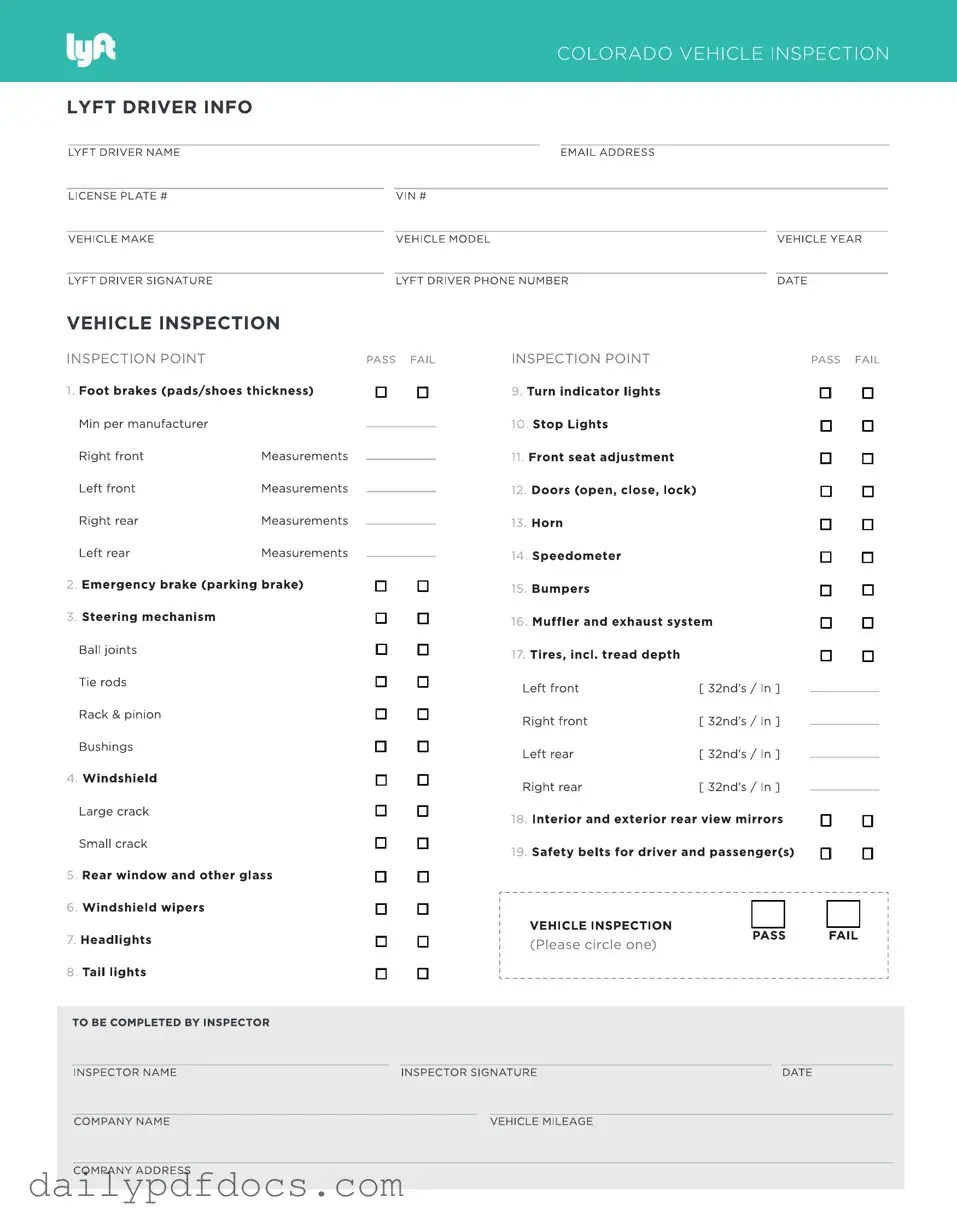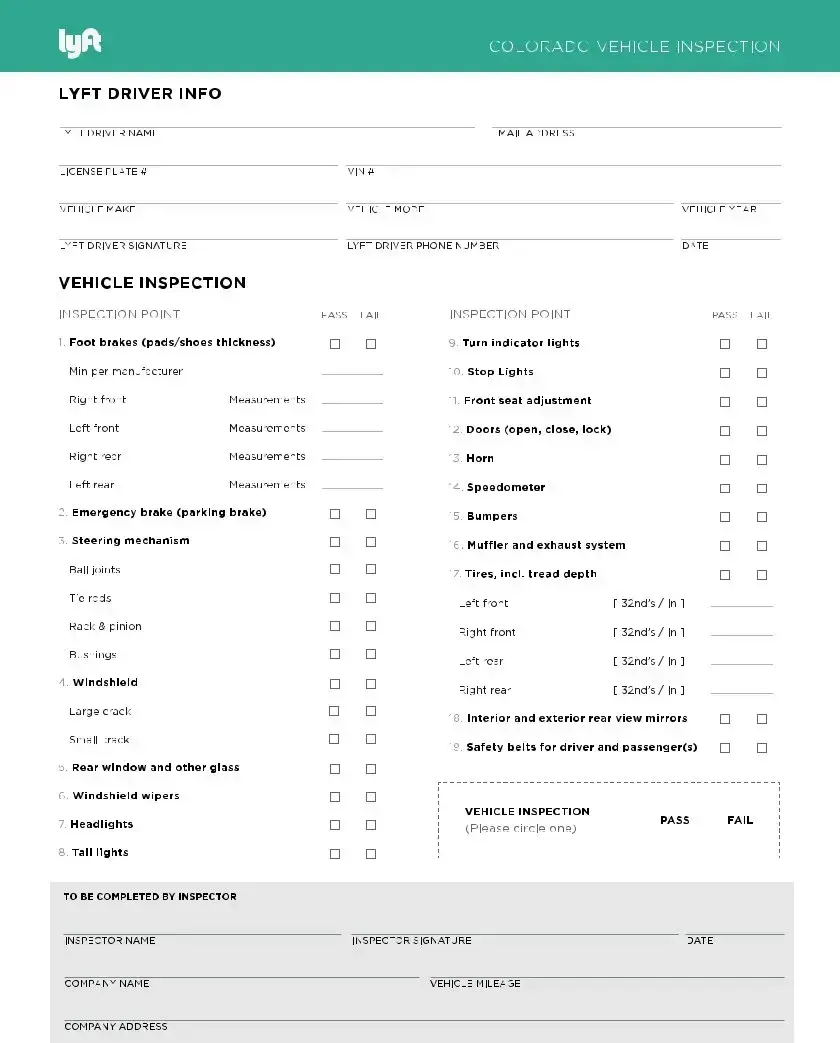What is the Lyft Inspection form?
The Lyft Inspection form is a document that drivers must complete to ensure their vehicle meets Lyft's safety and operational standards. This form is part of the vehicle inspection process required for all drivers who wish to use the Lyft platform.
Who needs to fill out the Lyft Inspection form?
All Lyft drivers are required to fill out the Inspection form. This includes both new drivers and existing drivers who are renewing their vehicle eligibility. Completing this form is crucial for maintaining compliance with Lyft's safety requirements.
Where can I obtain the Lyft Inspection form?
You can obtain the Lyft Inspection form through the Lyft driver app or the Lyft website. Look for the section related to vehicle requirements, where you will find a link to download the form. You may also receive a copy from an authorized inspection center.
How often do I need to complete the Lyft Inspection form?
You must complete the Lyft Inspection form annually or whenever you change vehicles. Additionally, if your vehicle has been involved in an accident or has undergone significant repairs, a new inspection may be necessary.
What should I do after completing the Lyft Inspection form?
After filling out the form, you need to submit it through the Lyft driver app or upload it to your driver profile on the Lyft website. Ensure that all information is accurate and that the form is signed by an authorized inspector.
What happens if my vehicle fails the inspection?
If your vehicle fails the inspection, you will need to address the issues identified by the inspector. Once the necessary repairs are made, you can have the vehicle re-inspected and complete a new Lyft Inspection form to regain eligibility.
Is there a fee for the vehicle inspection?
Yes, most inspection centers charge a fee for conducting the vehicle inspection. The cost can vary by location, so it's a good idea to check with the center beforehand to know what to expect.
What are the main criteria for passing the Lyft Inspection?
Key criteria for passing the inspection include the condition of brakes, tires, lights, and overall vehicle safety. The vehicle must also meet specific age and mileage limits set by Lyft. Ensure that all components are functioning properly before your inspection.
Can I drive for Lyft while waiting for my inspection results?
No, you cannot drive for Lyft until your vehicle passes the inspection and you have submitted the completed form. Driving without passing the inspection can lead to deactivation from the platform.
Who conducts the vehicle inspections?
Vehicle inspections must be conducted by a licensed mechanic or an authorized inspection center. Lyft provides a list of approved locations where you can have your vehicle inspected to ensure compliance with their standards.

